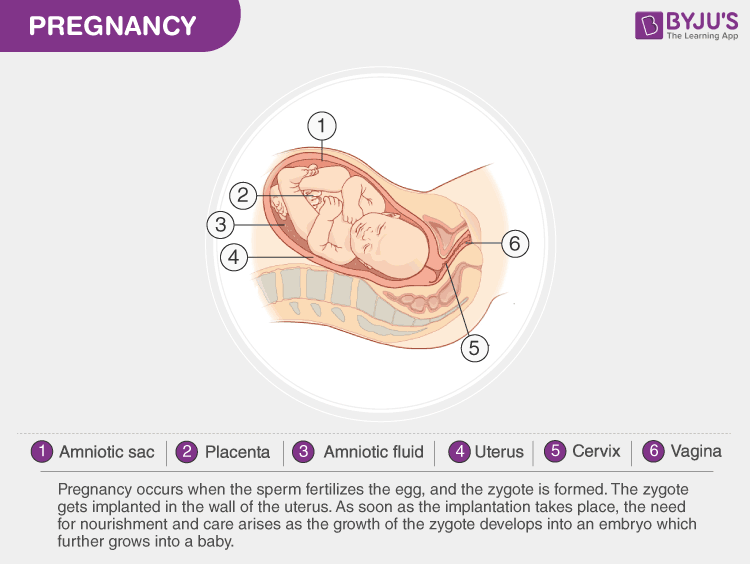Table of Contents
Introduction
A woman must go through many life stages before becoming a mother. Let’s look at the many stages of childbirth, starting with pregnancy and moving on to parturition and nursing.
Pregnancy

The zygote is created when the sperm fertilises the egg, which causes pregnancy. In the uterine wall, the zygote is implanted. The zygote matures into an embryo, which then develops into a child.
The requirement for feeding and care emerges as soon as the implantation occurs. The placenta, a layer that develops between the mother and the child, is in charge of carrying out this function. Chorion and uterine tissue combine to produce the placenta. This layer has a variety of functions during pregnancy, which are briefly explained below:-
- Supplying the developing foetus with oxygen and nutrition.
- It also removes the waste products the foetus excretes, taking over the job of the digestive and excretory systems.
- Hormones such as human placental lactogen, progesterone, oestrogen, human chorionic gonadotropin, and relaxin are released by the placenta and are essential for developing the foetus.
- The umbilical cord, which joins the foetus to the placenta, aids in the transfer of nutrients from the mother to the foetus that is necessary for growth.
The embryo begins displaying the triploblastic nature by splitting into three layers of cells as soon as implantation occurs. Ectoderm, mesoderm, and endoderm are formed during development which further gives rise to various organs.
Following implantation, each of these phases contributes to the baby’s development, which in humans takes nine months. The growth is moderate and quite gradual. The embryo’s heart develops first, then its limbs, primary organs, the development of hair, and so forth. The foetus is fully formed at nine months.
Parturition
At the end of pregnancy, the process of the uterus contracting at regular intervals aids in the delivery of the child. This begins with the foetal ejection reflex. The term “foetal ejection reflex” refers to the signals for an ejection that the fully formed foetus sends through the placenta. These signals cause skeletal muscles to contract.
The gestation period is the period from conception through birthing.
Lactation
It is the process by which the mammary glands produce milk at the end of pregnancy. Colostrum is the first form of breast milk that the glands produce. This milk is essential for the infant because it gives the newborn their initial protection against illnesses.
This was a brief explanation of pregnancy, parturition, and lactation.
To know more about Pregnancy, visit BYJU’S.

Comments